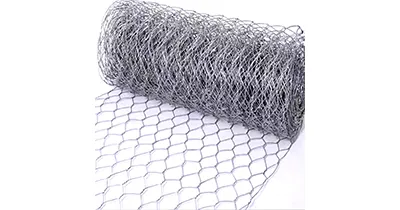-
 Phone:
Phone: -
 Email:
Email:

bailing wires
The Importance of Bailing Wires in Modern Industry
In today’s fast-paced world, the significance of bailing wires is often overlooked despite their critical role in various industries. These sturdy, flexible wires are essential for binding and securing materials together, whether in agriculture, recycling, or manufacturing. This article delves into the diverse applications of bailing wires, their materials, and their benefits, underscoring their value in modern industry.
What Are Bailing Wires?
Bailing wires, often referred to as baling wires, are heavy-duty wires used primarily to bind bales of material, hence the name. They are employed to secure a variety of products, including hay, cotton, and recyclable materials. Typically produced from galvanized steel or stainless steel, bailing wires boast high tensile strength and durability, making them ideal for applications where a reliable hold is crucial.
Applications of Bailing Wires
1. Agriculture One of the most well-known uses of bailing wires is in agriculture, particularly in the hay and straw industry. Farmers and ranchers rely on these wires to tightly bundle hay for storage and transportation. Proper bailing ensures that the hay remains intact, minimizing waste and maintaining quality.
2. Recycling The recycling industry is another significant user of bailing wires. Waste management facilities use bailing wires to compress and bind recyclables like plastic, aluminum, and paper into bales for easier handling and transport. This process not only boosts efficiency but also encourages recycling, supporting environmental sustainability.
3. Manufacturing In manufacturing, bailing wires are used for bundling finished goods. For instance, manufacturers may bundle metal parts or plastics to streamline shipping and storage. The use of bailing wires helps ensure that products reach their destination in good condition, reducing the risk of damage during transit.
4. Construction and DIY Projects Bailing wires play a valuable role in construction and home improvement projects as well. They can be used to secure various materials, such as insulation, plumbing, and electrical components. Their versatility makes them a go-to option for contractors and DIY enthusiasts alike.
Types of Bailing Wires
Bailing wires come in various types and sizes to cater to different needs. Common materials include
bailing wires

- Galvanized Steel This type is coated with a layer of zinc to prevent rust and corrosion, making it suitable for outdoor and high-moisture environments.
- Stainless Steel Known for its resistance to rust and high temperatures, stainless steel bailing wires are ideal for applications requiring enhanced durability and longevity.
- Polypropylene Some bailing wires are made from strong synthetic materials, offering a lighter option that is also resistant to chemicals and moisture.
Benefits of Using Bailing Wires
The advantages of bailing wires are manifold
- Strength and Durability Their robust construction means they can withstand considerable force without breaking, making them reliable for securing loads.
- Cost-Effectiveness Bailing wires are generally inexpensive, providing a budget-friendly solution for binding and securing materials across various industries.
- Versatility Available in different gauges and materials, bailing wires can be used in a multitude of applications, making them a versatile tool in any industry.
- Ease of Use Bailing wires are straightforward to work with; they can be cut to desired lengths and manipulated easily to achieve the required tightness.
Conclusion
In summary, bailing wires are an integral component in numerous industries, from agriculture to recycling and beyond. Their strength, versatility, and cost-effectiveness make them a preferred choice for binding and securing materials. As industries continue to evolve, the demand for reliable and efficient binding solutions like bailing wires will persist. Thus, recognizing and appreciating the role of these often-overlooked wires is essential for understanding their contribution to modern industry and the economy at large. The next time you see a bale of hay or a stack of recycled materials, remember the humble bailing wire that holds it all together.
-
Wire Mesh for Every Need: A Practical SolutionNewsJul.25,2025
-
Steel Fences: Durable, Secure, and Stylish OptionsNewsJul.25,2025
-
Roll Top Fencing: A Smart Solution for Safety and SecurityNewsJul.25,2025
-
Cattle Farm Fencing Solutions for Maximum SecurityNewsJul.25,2025
-
Affordable Iron Binding Wire SolutionsNewsJul.25,2025
-
Affordable Galvanized Wire SolutionsNewsJul.25,2025
-
Wire Hanger Recycling IdeasNewsJul.25,2025








